An open-source analysis of Kremlin propaganda spread about the Baltic states
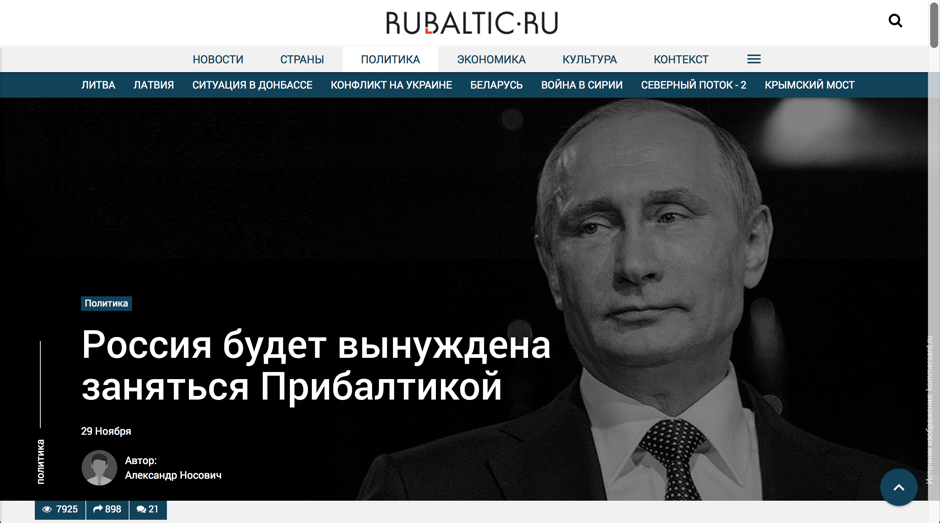 On November 29, Russian political scientist and international journalist Aleksandr Nosovich wrote an article in pro-Kremlin media outlet Rubaltic.ru entitled, “Russian will be forced to engage in the Baltics.” He meant engage militarily. The article went on to posit that the Baltic states provoke Russia, which leaves the Kremlin no choice but to turn military attention toward the region on its western border.
On November 29, Russian political scientist and international journalist Aleksandr Nosovich wrote an article in pro-Kremlin media outlet Rubaltic.ru entitled, “Russian will be forced to engage in the Baltics.” He meant engage militarily. The article went on to posit that the Baltic states provoke Russia, which leaves the Kremlin no choice but to turn military attention toward the region on its western border.
The article used many techniques and messages employed in pro-Kremlin propaganda.
According to Aleksander Krol’s analysis published by the Warsaw Institute in July 2017 entitled “Russian Information Warfare in the Baltic States — Resources and Aims”, the narratives most propagated by Kremlin or Kremlin-aligned outlets manipulate history by glorifying the Soviet past of Lithuania, Latvia, and Estonia, suggest economic or demographic decline of the Baltic states, and create a negative image of the broadly defined “West”, European Union (EU), and NATO.
Aleksandr Nosovich article was widely shared and used each of the tactics described above. He began with the trope that the West does not need the Baltic states.

Nosovich wrote:
The Baltic states are of no interest to anyone: they would not be accepted at an accelerated pace in NATO and the European Union, would not receive loans for reforms, and would not get subsidies from the EU budget, if it wasn’t for the geopolitical context. Just as the Soviet Union previously would not have made the “showcase of socialism” from the Baltic states.
Lithuania, Latvia and Estonia are used to using their geopolitical position.
This argument would make more sense if the Baltic states would have been the only ones that were accepted to join EU in 2004. In fact, ten countries joined the EU in 2004 including Latvia, Lithuania, and Estonia. Therefore the Baltic states were just a part of larger EU expansion.
The author then moved onto to the next message that the declining economic situation in the Baltic states caused by “demographical crisis”, in which the younger, working Baltic population is moving away from home to other EU member countries.

The paragraph read:
It is impossible to cope with the impact of the demographic crisis without the help of Western allies. Baltic politicians will need to attract the attention of American and European colleagues, and encourage them to provide financial assistance. The only way they can do this is to remind the allies of the “Russian threat” and demand to protect them from “Russian aggression”.
Population in the Baltic states is declining indeed.

Nevertheless, all three Baltic states experience significant economic growth among other EU countries. The map below shows that most of the Eastern European countries are growing faster than the old European economies like Germany, France, Italy, and the United Kingdom.
Besides, all three Baltic states already received the European funds allocated for regional development from 2014 to 2020. Neither of the priorities concern “protection from the ‘Russian threat’”.
Nosovich finally warned that the Baltic states are potentially sympathetic to Nazi ideology and will willing bring back the fissures of World War II to take revenge on Soviet occupation, a term he put in quotation marks.
The paragraph read:
Russia should wait for new campaigns calling for a “second Nuremberg” over the USSR, equating communism with Nazism and paying compensation for “Soviet occupation.”
Finally, Nosovich mentioned Lithuania called for anti-aircraft missile permanent deployment in July 2017. Nosovich arrived at the conclusion that NATO will have nuclear missiles in the Baltic states.
The paragraph read:
If this trend continues, it will come to deploying nuclear weapons in the Baltics, which will cause a new Caribbean crisis between Russia and the West in the Baltic Sea region.
Each hyperlink used in the article led to content published in Rubaltic.ru. Out of thirteen articles linked, six were written by Nosovich.
The spread
According to social media statistics, the article was shared over nine hundred times, mainly on Facebook. The article was tagged with key search terms “Russia”, “The Baltics”, “Militarization of the Baltics”, and “Information war”.
@DFRLab identified at least 17 media outlets in Russian, which republished the article. Most re-posted articles referred to Rubaltic.ru and Aleksandr Nosovich as the source.
Curiously, neither Baltnews nor Sputnik — both Kremlin-backed media outlets — did not republish the story on their local versions in Latvia, Lithuania, and Estonia. Most of the media outlets illustrated the article with Russian President Vladimir Putin’s image.
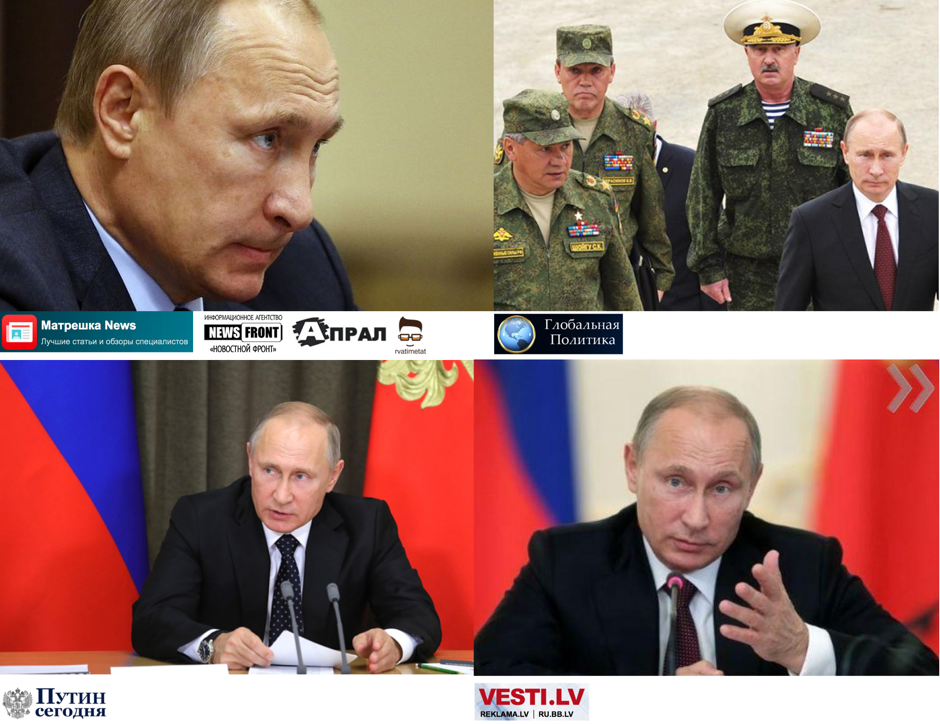
A few articles chose to use a map of the Baltic states or a military man.
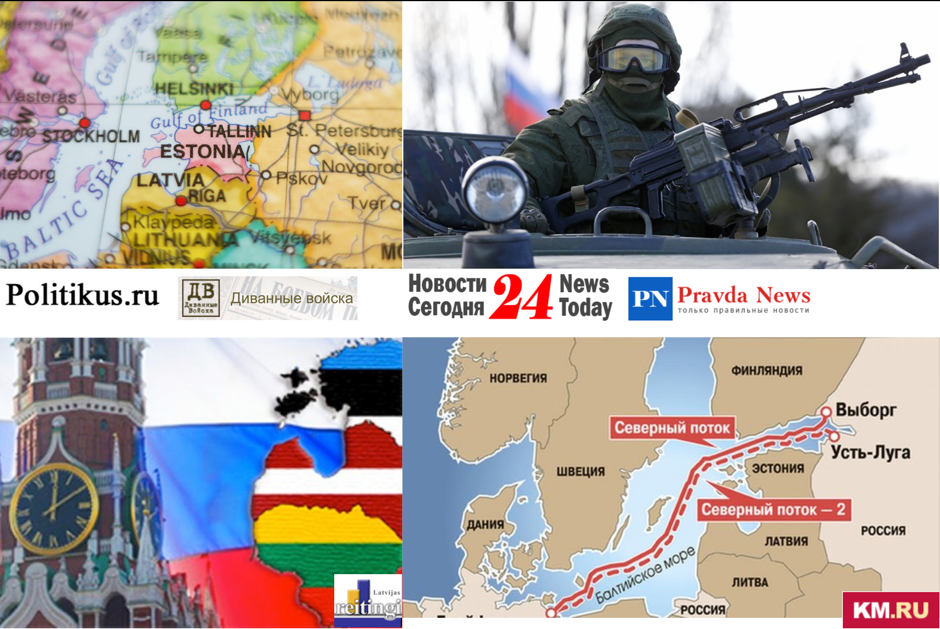
Some VKontakte (VK) users accompanied the repost of the article with a hostile illustration. For instance, a VK user Viktor-Ivanovich Kalashnikovillustrated the repost of the article with a meme that calls the Baltic states Russia’s property.
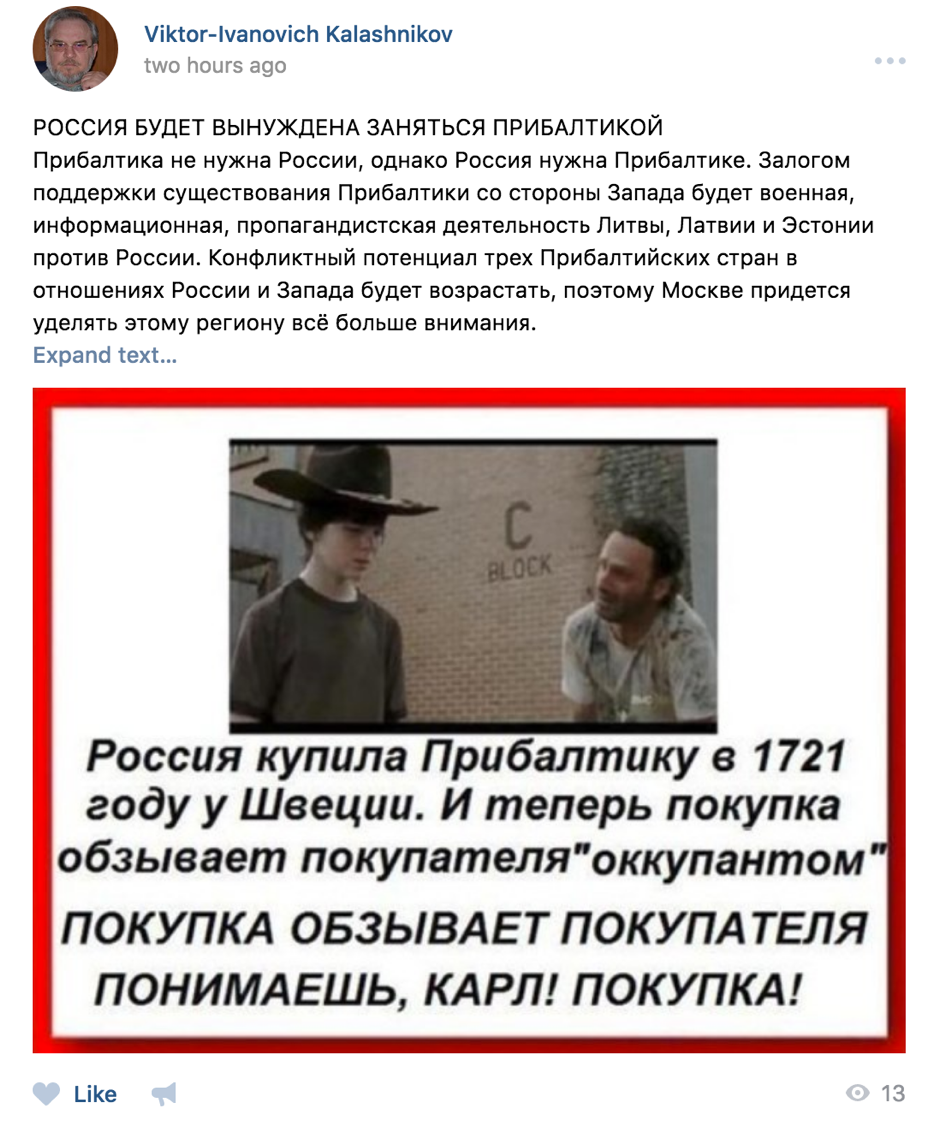
The text on the image read:
Russia has bought the Baltic states in 1721 from Sweden. And now the commodity is calling the buyer an “occupant”. COMMODITY IS CALLING THE BUYER YOU UNDERSTAND, KARL! THE COMMODITY!
VK user Casus Belli Geopolitika illustrated the article with a Russian bear covering scared dogs representing the Baltic states with a helmet of NATO.
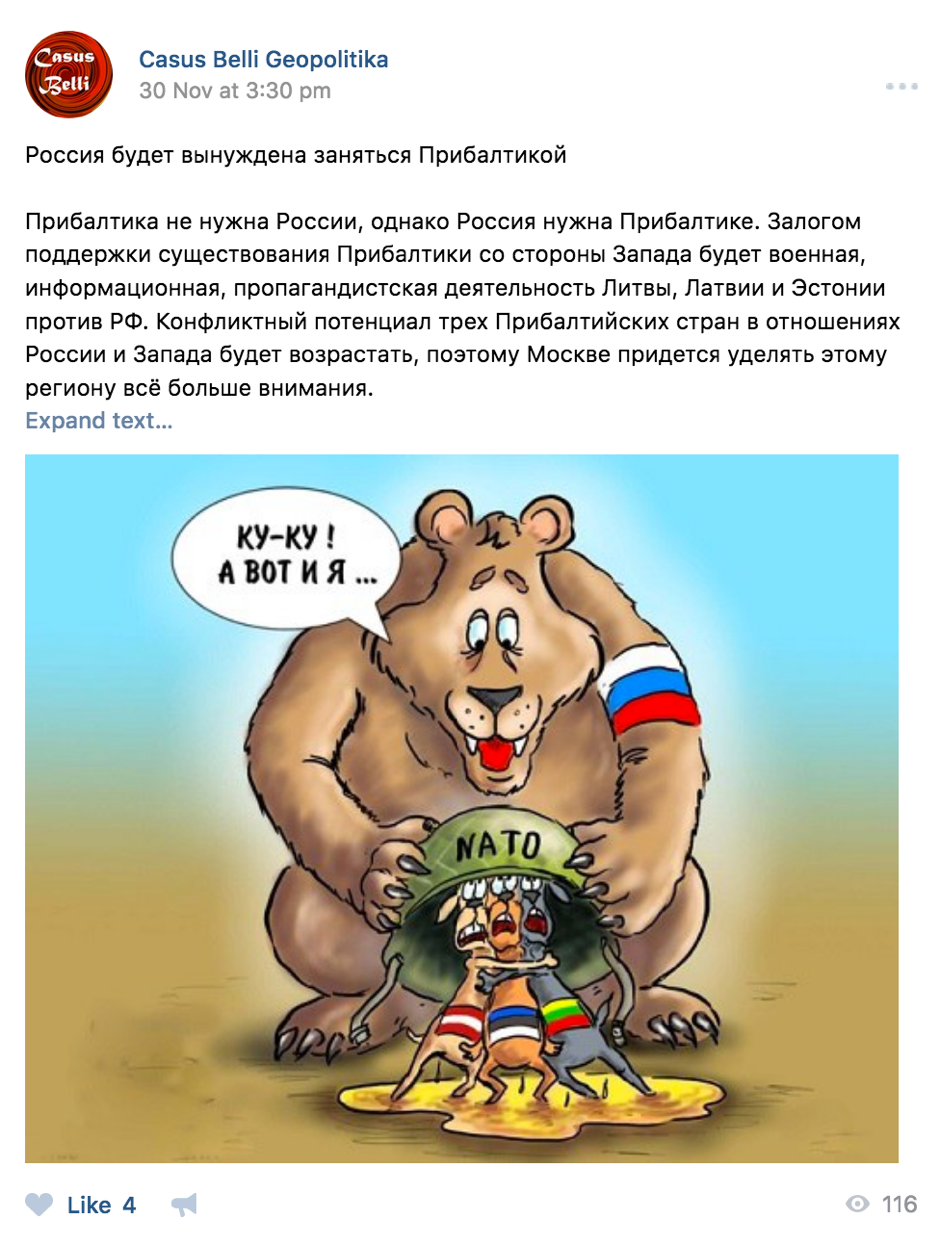
The speech bubble of the bear translated from Russian: “Ku-ku! Here I am…”
Finally, a VK community named “Latvian People’s Republic LSSR Latvia” changed the title of the article to “Latvia — Russia: The War is Inevitable” and illustrated the post with an ominous photo Russian President Vladimir Putin Minister of Defense Sergey Shoygu.
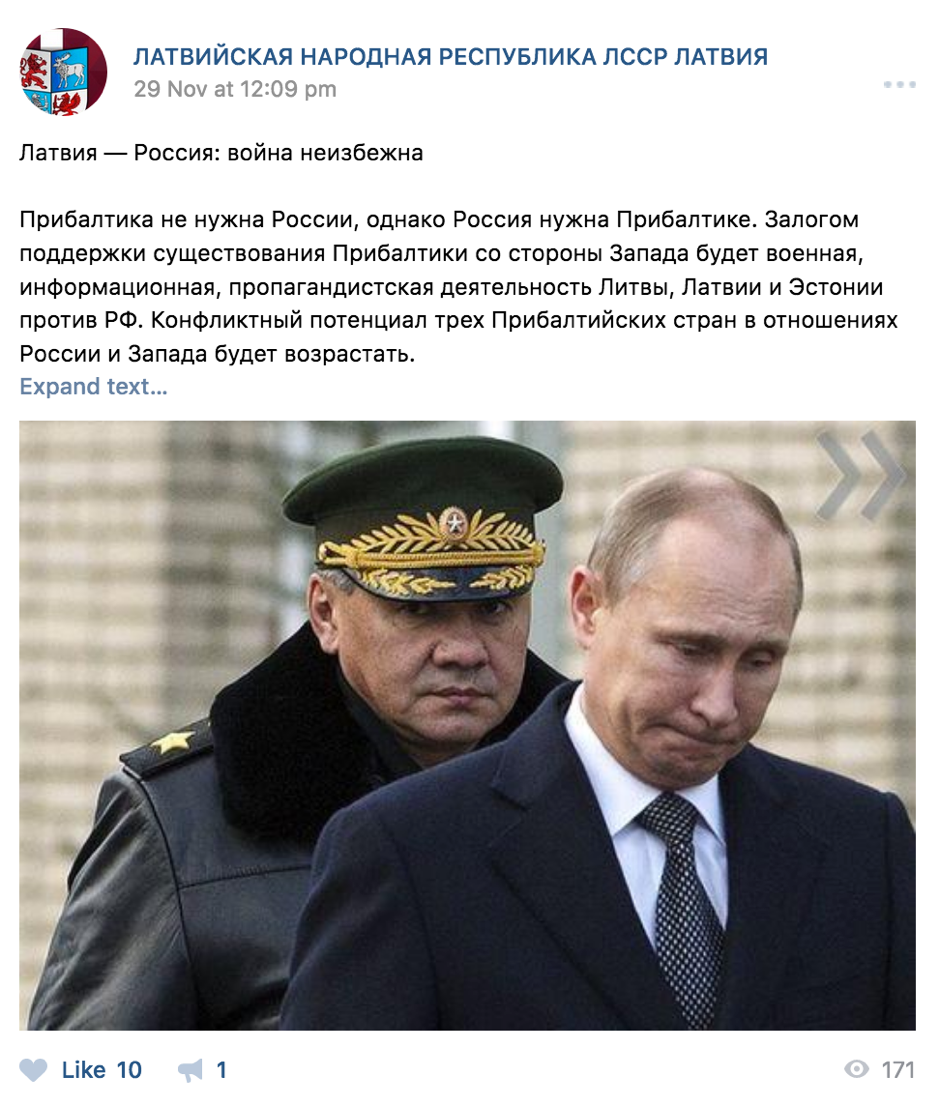
The article was produced a number of videos on YouTube. Specifically, News 7published YouTube video on November 30 focused on Nosovich’s article, which was viewed almost fifty thousand times.
Another video was published by Gleb Volin YouTube channel on December 1. By the time this report, the video was viewed over five thousand times.
Conclusion
Nosovich utilized well-known themes and tactics for Kremlin or Kremlin-aligned messaging in the Baltic states. The difference was the utility with which the somewhat traditional messaging in Nosovich’s article was spread over various mediums, like video and imagery, and social media platforms, like Facebook, YouTube, and VK. The article was shared on social media at least nine hundred times and republished by at least 17 media outlets in Russian, including Russian language outlets in the Baltics.
Nika Aleksejeva is a Digital Forensic Research Associate at the Atlantic Council’s Digital Forensic Research Lab (@DFRLab).
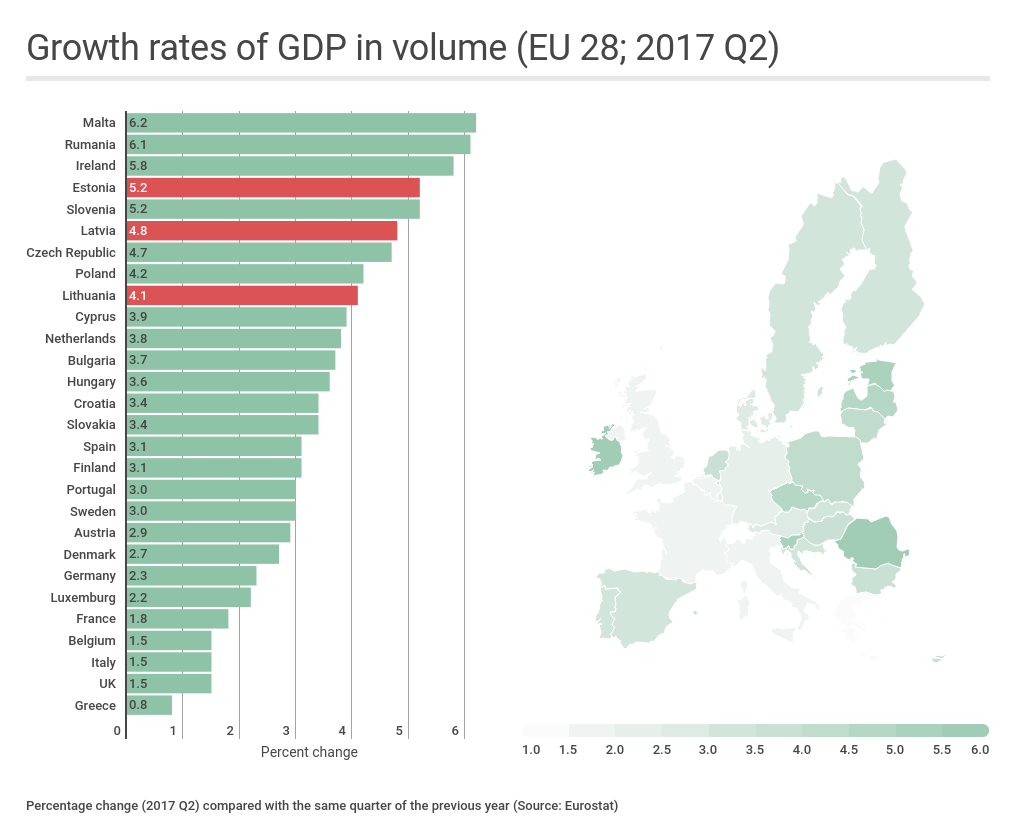
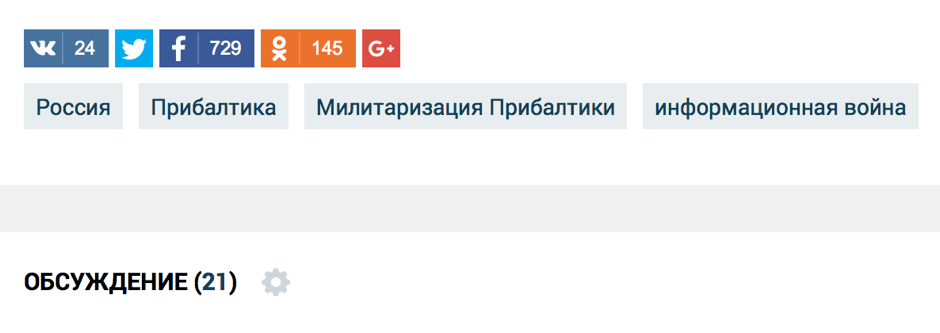
No comments:
Post a Comment